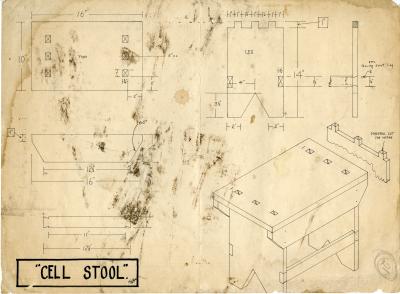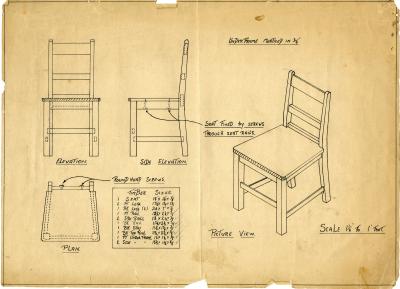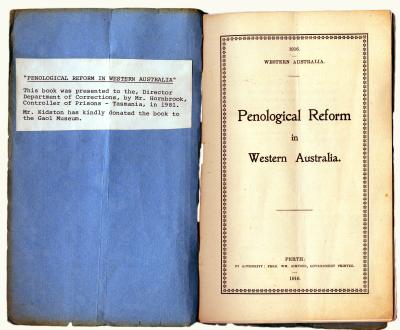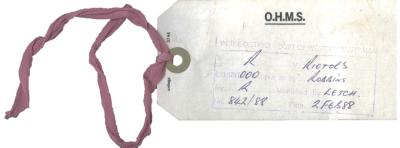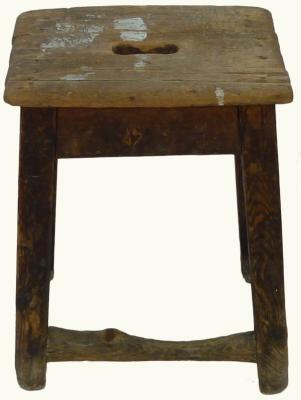NEW TESTAMENT BIBLE
1854Small, rectangular, bound and printed edition of the New Testament Bible, published in 1854. The bible has hardback covers finished in burgundy coloured buckram, which has worn through at the corners. Handwritten in black ink along the open edge is the text 'C [broad arrow] E'. Handwritten in black ink on the inside front cover is the text 'Convict Establishment / WA'.
Provenanced to Fremantle Prison. Received by the Prison Museum from the Anglican Chapel of Fremantle Prison in January 1979.
Details
Details
To nineteenth century prison reformers, religion was an integral part of the convict system. In 1842, Lord Stanley is quoted as saying, “We anticipate a systematic course of moral and religious instruction will afford the means of applying such salutary influences as may best induce the convicts to betake themselves to industrious and useful pursuits”. For this an Anglican Chaplain was sent with the first ship of convicts to Western Australia in 1850. Attendance at Divine Service, and morning and evening prayers, was enforced, and Sunday worship remained compulsory for all inmates at Fremantle Prison until 1931.
The architecture and location of the Anglican Chapel is an indication of the significance placed upon religion in the convict era. The Anglican Chapel is one of the finest, and most intact, of early prison chapels in Australia. It occupies the most central location in the precinct. Its interior features include the first laminated timber arch structure in the state, handsome Decalogue boards and some original and elegant joinery. The chapel was completed between 1856 and 1857. The ten commandments, Lord’s prayer and the creed were painted on four ‘boards’ by Charles Hamilton, a lifer, sometime before 1874, when he was recommended for remission. They were painted as the clerk of works Mr. Broomhall, said, “in a very superior manner”, and although repainted are still in reasonably good condition today.
Each convict who entered the Establishment received his own personal Bible, and three of these personal bibles are retained in the Fremantle Prison Collection. They are bound and printed editions of the New Testament Bible, published in 1854. The bibles have hardback covers, finished in a burgundy coloured buckram, which has worn through at the corners. Hand written in black ink, along the open edge of the book, is the text 'C [broad arrow] E'. Whilst the ‘C’ and ‘E’ stand for Convict Establishment, the broad arrow mark, which originated with Henry, Earl of Romney, the Master General of Ordnance from 1693 to1702, signified British Government property. Handwritten in black ink on the inside front cover of these three bibles is the text 'Convict Establishment WA'.
As an essential tool to assist the reform of convicts, these bibles hold high historic and social significance, as well as spiritual value, as a tangible link with the importance of religion during the convict era at Fremantle Prison. They have high rarity value and strong provenance, as the only three surviving examples of personal bibles from the Convict Establishment. They are internationally significant examples of the personal religious observance encouraged in prisoners during the convict era in Western Australia.

